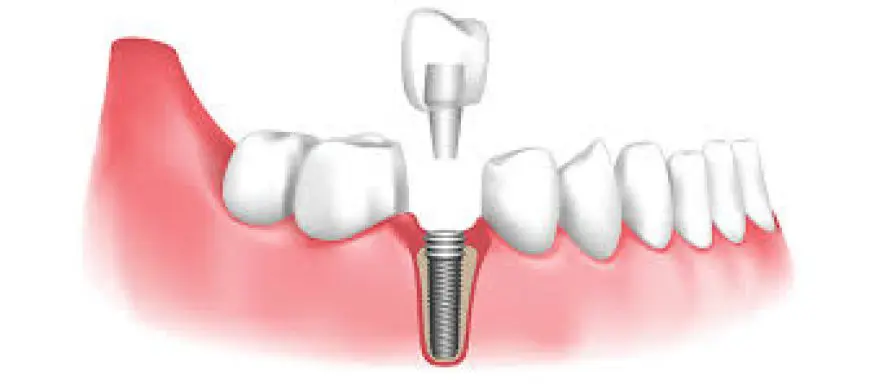Dental Implants Market: Size, Trends, Innovations, and Growth Projections
Explore the global Dental Implants Market trends, growth drivers, competitive landscape, innovations, pricing analysis, and future outlook from 2024 to 2035. Get key insights on market segmentation, sustainability, and emerging opportunities.

Market Overview
The Global Dental Implants Market is valued at USD 4.3 Billion in 2022 and is projected to reach a value of USD 6.9 Billion by 2030 at a CAGR (Compound Annual Growth Rate) of 6.1% between 2023 and 2030, the dental implants market is experiencing significant growth due to increasing demand for dental restoration solutions, rising cases of periodontal diseases, and advancements in implant technology. Dental implants are artificial tooth roots made of biocompatible materials such as titanium and zirconia, designed to support prosthetic teeth. They serve as a long-term solution for tooth loss caused by aging, accidents, or medical conditions. The primary product types include endosteal implants, subperiosteal implants, and transosteal implants. These products are extensively used in hospitals, dental clinics, and research institutes for restorative and cosmetic dental procedures.
Our comprehensive Dental Implants Market report ready with the latest trends, growth opportunities, and strategic analysis: View Sample Report PDF

Key Market Trends
Technological Advancements
Advancements in digital dentistry, such as computer-aided design and manufacturing (CAD/CAM), 3D printing, and guided implant surgery, have significantly improved the precision, success rates, and efficiency of dental implant procedures.
Growing Adoption of Minimally Invasive Procedures
Patients prefer minimally invasive procedures that reduce healing time and post-operative discomfort. Techniques like flapless implant surgery and immediate loading implants are gaining traction.
Increasing Demand for Aesthetic Dentistry
The rising consumer preference for aesthetic dental solutions has driven demand for ceramic and zirconia implants, which offer enhanced durability and natural appearance compared to traditional titanium implants.
Aging Population and Rising Oral Health Issues
With an increasing aging population, there is a higher prevalence of tooth loss, which directly fuels demand for dental implants. Moreover, factors such as poor dietary habits and smoking contribute to dental diseases, increasing the need for implant solutions.
Sustainability and Biocompatible Materials
Eco-friendly dental implants made from biodegradable and bioresorbable materials are gaining popularity, aligning with global sustainability initiatives.
Competitive Landscape
The dental implants market is dominated by key players such as,
- Nobel Biocare Services AG (Switzerland)
- Kyocera Medical Technologies Inc. (U.S.)
- Zimmer Biomet Holdings Inc. (U.S.)
- BioHorizons IPH Inc. (U.S.)
- DENTSPLY Sirona (U.S.)
- Osstem Implant (South Korea)
- Institut Straumann AG (Switzerland)
- Bicon Dental Implants (U.S.)
- DentiumUSA (U.S.)
- T-Plus Tech (Japan)
Recent Developments
- Straumann Group has introduced digital workflows and AI-driven implant planning.
- Nobel Biocare has expanded its premium implant offerings with surface modifications for better osseointegration.
- Osstem Implant is focusing on cost-effective implants to target emerging markets.
Product or Service Analysis
Endosteal Implants
The most common type of implant, surgically placed into the jawbone and used as a foundation for prosthetic teeth.
Subperiosteal Implants
Used for patients with insufficient bone density, these implants are placed under the gum but above the jawbone.
Zygomatic Implants
An alternative for severe bone loss cases, anchored in the cheekbone rather than the jawbone.
Market Segmentation
By Material
- Titanium
- Zirconium
- Ceramic
By Design
- Tapered Implants
- Parallel Wall Implants
By End User
- Dental Clinics
- Hospitals
- Research Institutes
By Type
- Endosteal Implants
- Subperiosteal Implants
- Transosteal Implants
- Intramucosal Implants
By Procedure
- Root-form
- Plate-form
By Region
- North America
- Europe
- Asia Pacific
- Latin America
- Middle East & Africa
Take Action Now: Secure your Dental Implants industry today – Purchase Now
Pricing Trends
The average cost of dental implants varies based on material, complexity, and geographic location. Titanium implants remain the standard due to affordability, while zirconia implants are gaining popularity despite being relatively expensive. Prices are influenced by technological advancements and reimbursement policies.
Innovations and Developments
The market is witnessing innovations such as smart dental implants with embedded sensors for real-time health monitoring and antibacterial coatings to prevent infections. 3D-printed dental implants are also revolutionizing the market by offering personalized solutions.
Sustainability and Environmental Impact
Dental manufacturers are focusing on reducing carbon footprints by adopting sustainable practices, including eco-friendly packaging and biodegradable implant materials. Regulatory bodies are encouraging greener alternatives to traditional implant materials.
For Dental Implants Market Report and updates detailed: View Full Report Now!
Conclusion and Future Outlook
The global dental implants market is poised for sustained growth due to advancements in implant technology, rising dental awareness, and the increasing prevalence of oral health issues. North America and Europe continue to lead, but emerging markets in Asia-Pacific are expected to witness significant expansion. Future trends include AI-driven implantology, regenerative biomaterials, and enhanced digital workflows for better patient outcomes.
Overall, the period from 2024-2035 presents substantial opportunities for stakeholders in the dental implants industry, with a strong emphasis on innovation, affordability, and sustainability.













![Dialysis Market Size, Share, Trends | Growth Analysis [2035]](https://www.marketbusinessinsights.com/uploads/images/202502/image_140x98_67b34ae16c42c.webp)





